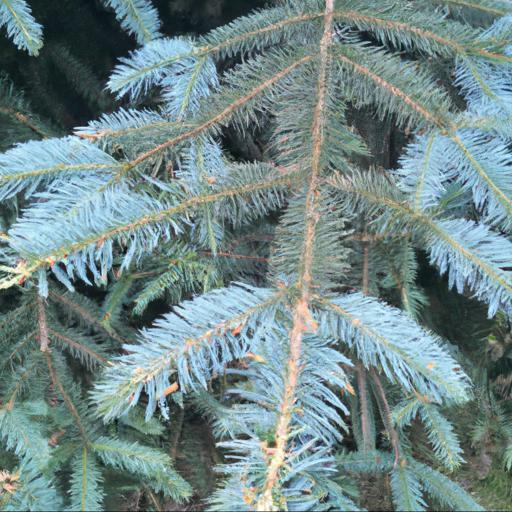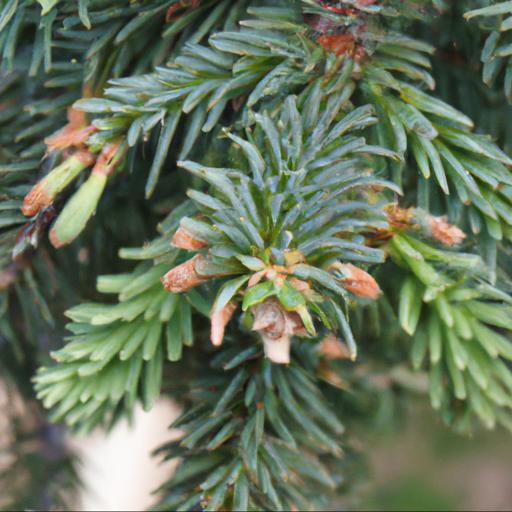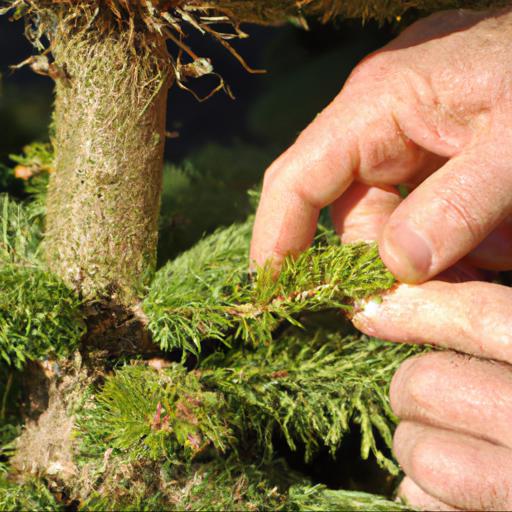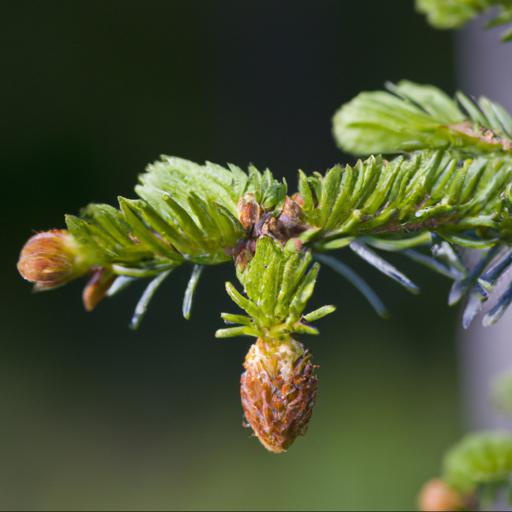Picea abies, commonly known as Norway spruce, is a species of evergreen coniferous tree native to northern Europe. It is a large tree, growing up to 50 m tall and
5 m in diameter. It has a distinctive pyramidal shape and its needles are a dark green color. Picea abies is a popular tree for landscaping, as it is both attractive and fast-growing.
It is also used for timber production and is an important source of pulpwood for the paper industry. The species is also valued for its medicinal properties and has been used in traditional medicine for centuries.
Characteristics of picea abies

Picea abies, more commonly known as Norway spruce, is an evergreen species of coniferous tree that is native to Europe, where it is often used as a decorative tree in gardens. Despite its delicate features, Picea abies is a hardy species and can withstand cold temperatures, making it an ideal choice for gardens in cooler climates. This tree exhibits various features that are beneficial to gardeners, making it a popular garden fixture throughout the British Isles.
The Norway spruce has a distinctive conical shape with a symmetrical top and soft, spreading branches that are quite strong, making it an elegant addition to any garden. The branches are somewhat flexible and can be trained to shape and form desired shapes.
The bark is gray-brown with horizontal and vertical lenticles that can be seen when looking closely. The needles measure 5 to 2 cm in length and they have sharp tips, with the new growth having bright green hue.
The cones are broad, ovoid-conical, and measure around 4 to 5 cm long, maturing to a brown-yellow color. Picea abies is quite prolific and can reach heights of up to 60m, with a trunk diameter of around 1m.
Its deep roots make it tolerant of windy and even harsh conditions, making it suitable for home gardens that may be subjected to varying soil quality, climate and wind. The soft texture of the tree also makes it a preferred choice for areas near pathways and pathways, as it encourages people to walk up close to it. Furthermore, Picea abies is a fast-growing species that can reach stunning heights in a relatively short period of time.
In conclusion, Picea abies is a hardy, yet elegant species of tree that is ideal for colder climates, making it a popular choice for gardens throughout the British Isles. With its distinct conical shape and soft, spreading branches, the Norway spruce is sure to become an eye-catching centerpiece of any garden.
Furthermore, its fast growth rate and deep roots make it tolerant of harsh conditions, and its soft texture makes it suitable for areas near pathways.
Benefits of picea abies

Picea abies, commonly known as Norway Spruce, has become increasingly popular in the UK for both commercial and residential landscaping. This coniferous tree bears a long list of benefits that make it an ideal addition to any garden. From its eye-catching aesthetic to its hardiness, Picea abies is an investment worth making.
First, Picea abies is known for its interesting colouring and shape. This conifer’s foliage is typically a lustrous dark green and its thin, pendulous branches take on a distinct gracefulness.
It’s dark green needles can range anywhere from two to four inches in length and its cone-like cones are both ornamental and useful. It can also be trimmed more regularly than many trees to allow for a more compact shape, making it perfect for smaller spaces.
Second, Picea abies is adaptable to a variety of climates and soil conditions. As long as the soil is well draining and of a sufficient pH-level, it can withstand cold and even heat. This makes it an extremely practical choice for those living in areas where the climate can vary drastically from season to season.
Additionally, Picea abies is well known for its extreme hardiness and is less prone to pests and diseases than other conifers. Finally, Picea abies is quite low maintenance, requiring only occasional pruning and fertilizing.
Its resilience and low-maintenance requirements make it a great choice for beginning gardeners or those who don’t have a lot of time to spend tending to their gardens. In conclusion, Picea abies is a unique and attractive conifer that can add beauty and character to any garden. With its low maintenance requirements and hardiness, it is an ideal tree for UK gardens.
Its attractive colouring and shape will draw attention to any area, while its resilience and adaptability make it easy to take care of. For all these reasons, Picea abies is worth adding to any landscaping project.
Growing and caring for picea abies

Picea abies, most commonly known as Norway Spruce, is a fast-growing evergreen conifer that has been found to be one of the most popular additions to garden landscapes. Growing up to 8 feet a year, this is a tree that can make a dramatic addition to any garden.
With its fine-textured branches and dense foliage, it serves as a great spot for adding birds and other types of wildlife. Naturally, Picea abies can be found in most parts of Europe, so it’s fitting that this tree was originally introduced to the United Kingdom in the Early 19th century. While it’s an easy tree to grow and maintain, proper tending is essential for its well-being and long-term health.
When it comes to growing and caring for a Picea abies, start by planting it in an area with ample sun and well-drained soil. If kept in proper soil conditions, the tree can establish itself quickly. Water and fertilise regularly to ensure healthy growth, and protect it from wind and overly dry conditions.
Prune it every couple of years to keep the tree from becoming overly dense and overcrowded. In conclusion, growing and caring for a Picea abies is simple and straightforward.
With proper technique and attention, this evergreen in the pinewood family can quickly become a prized tree in any garden.
Common uses of picea abies
Picea abies, or Norway spruce as it is more commonly known, is a beautiful evergreen tree that is popularly used in gardens around the UK and Europe. This coniferous species of Fir grows up to 25 metres in height and has attractive needles that are bright apple green in colour. Popular for its dense conical form and attractive foliage, Picea abies is an excellent choice for those looking to add some year-round interest to their gardens.
One of the most common uses for Picea abies is as a specimen tree. A single tree can be planted alone to add a striking feature to any garden, or it can also be used en masse to create an attractive screen or formal hedge.
With a symmetrical coniferous form, this evergreen tree can also be used to create topiary, perfect for providing a classical feature in any landscape design. In addition to landscape design, this Fir can be used to create gorgeous holiday decorations.
Many gardeners like to bring in branches of Picea abies to deck the halls of their homes, using the branches to add festive accents like wreaths to their seasonal decorations. It also makes a beautiful choice for outdoor decorations, as its bright apple green color stands out against the cold winter backdrop. No matter what purpose you need it for, Picea abies is a beautiful versatile tree that can grace any garden.
Its low-maintenance nature and striking foliage make it the perfect choice for creating standout features in any garden design. This great tree can provide year-round structure and beauty, its presence welcomed by gardeners all around the UK.
Our video recommendation
Final Touch
Picea abies, commonly known as Norway spruce, is a species of spruce native to Northern, Central and Eastern Europe. It is a large evergreen coniferous tree growing to a height of up to 50 m and is one of the most widely planted conifers in the world.
Its needles are a glossy green colour, and its cones are brown and cylindrical. Norway spruce is a popular choice for landscaping and timber production, and is also used in the production of pulp and paper.
FAQ
What is the scientific name of Norway Spruce?
The scientific name of Norway Spruce is Picea abies.
What is the natural range of Norway Spruce?
The natural range of Norway Spruce is from Northern Europe and Northern Asia, extending from Norway and Sweden eastward to the Ural Mountains in Russia.
What are the common uses of Norway Spruce?
Common uses of Norway Spruce include lumber, pulpwood, firewood, and Christmas trees. It is also used as an ornamental tree in landscaping.
How long does Norway Spruce take to reach maturity?
The Norway Spruce typically takes between 20-30 years to reach maturity.
What are the characteristics of Norway Spruce?
The Norway Spruce is an evergreen coniferous tree that is native to northern Europe and Asia. It is a large, pyramidal tree with a dense, conical crown. Its bark is gray-brown and scaly, and its needles are dark green, 1-2 inches long, and have a sharp point. The Norway Spruce is also very hardy and can tolerate cold temperatures and poor soils.
What are the diseases that affect Norway Spruce?
The most common diseases that affect Norway Spruce are Rhizosphaera needle cast, Cytospora canker, and Phytophthora root rot.

